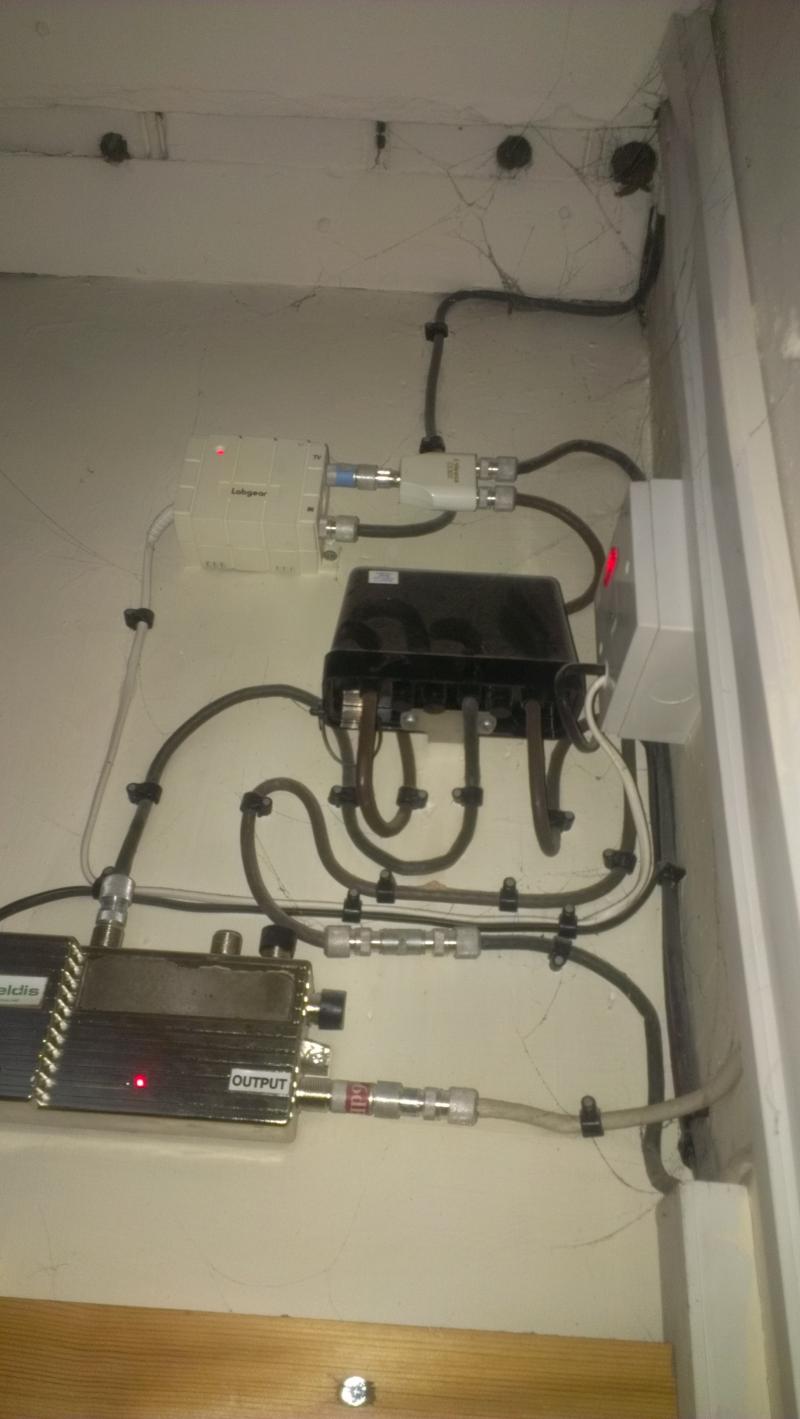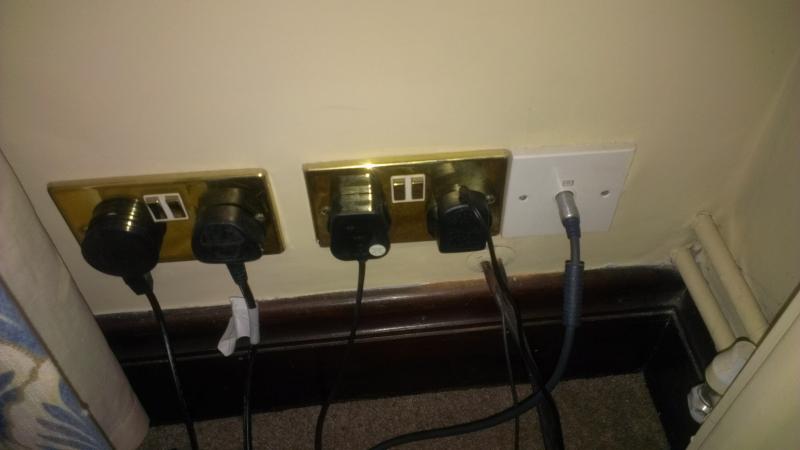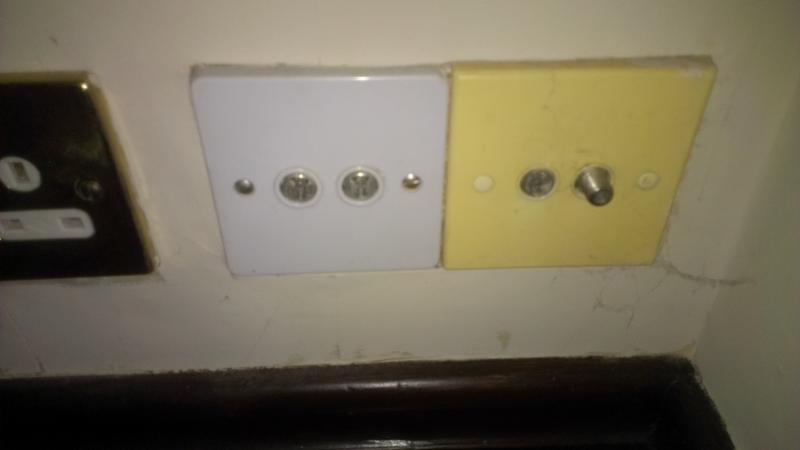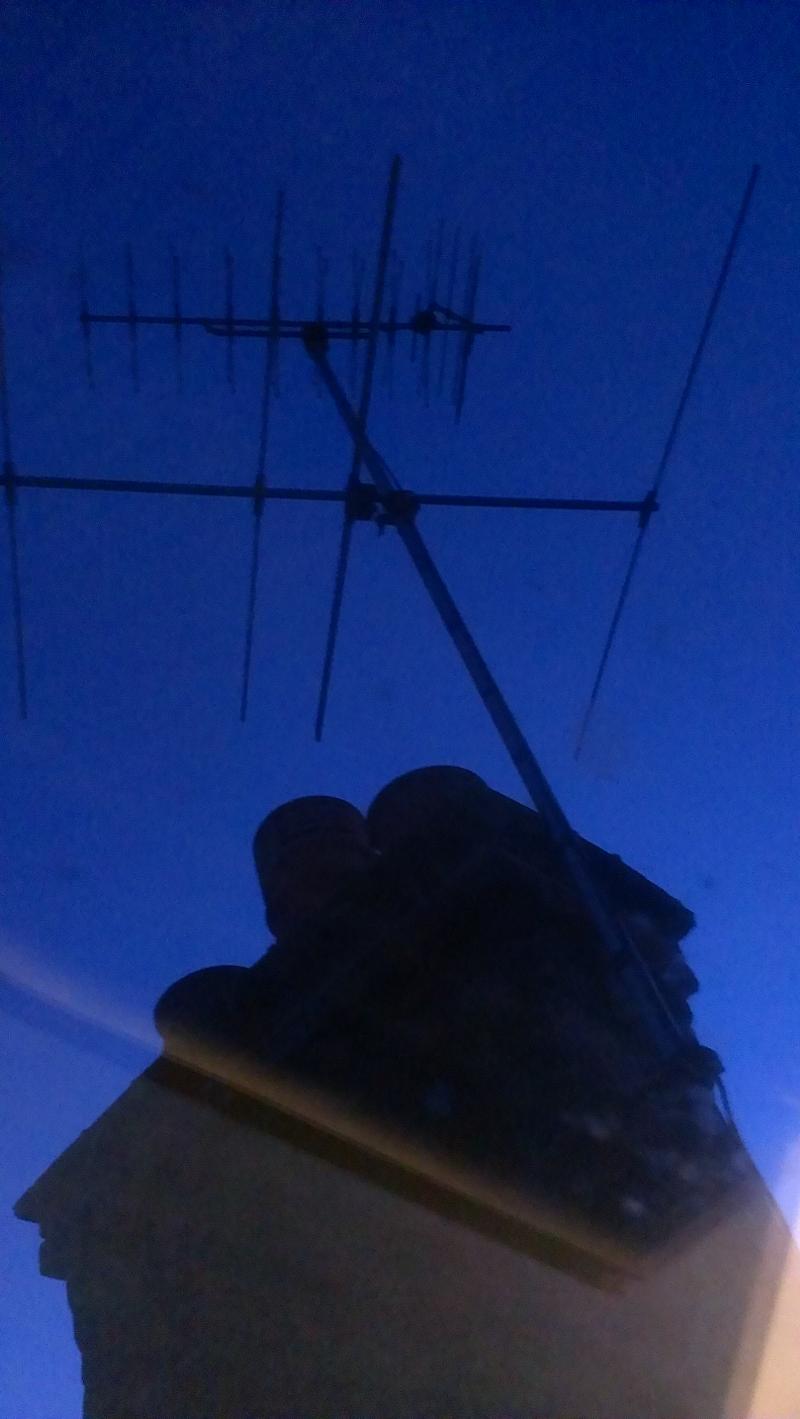I moved into a house which has a no of TV points - in bedrooms, kitchen etc. The SKY feed comes into the lounge and the dining room - each has two sky cables for the sky box. The previous owners had a sky box in both. I just have sky box in the lounge.
When I bought the house I was told that on TV CH 6 I could receive SKY in the bedrooms. I have never managed to get that to work. I cant work out how the sky would get distributed round the house.
Secondly, The bedroom and the kitchen TVs worked fine as did the lounge TV (both on aerial and on SKY box). However recently the TVs connected to the aerial socket don't work - sometimes there is a very pixilated picture with intermittent sound on BBC1 and BBC2. I first thought it was the TV on the blink but that's not the case.
Near the loft, there is a "Clapham Junction" of wires connecting to three boxes which I guess distributes the aerial signal to the various aerial sockets round the house?
. I attach a picture. I'd be grateful for any explanation of the set up:
For example:
1. is the top cable the aerial signal coming in?
2. This cable then goes into the top white box which is powered - the socket marked TV has a splitter attached with a cable going into the middle black box and the other going off somewhere - what's the function of these boxes?
3. There are a no of cables coming out of the black box going into the bottom box - again, what does this box do?
How do I work out whether my aerial needs replacing or whether its one of the boxes by the loft? and secondly, how do I get sky in the other rooms?
Any help/explanation appreciated as I'd like to understand the set up and hopefully get it working.
If I get someone in to look at it, what should I expect to pay?
Thanks Again[wiki][/wiki]
When I bought the house I was told that on TV CH 6 I could receive SKY in the bedrooms. I have never managed to get that to work. I cant work out how the sky would get distributed round the house.
Secondly, The bedroom and the kitchen TVs worked fine as did the lounge TV (both on aerial and on SKY box). However recently the TVs connected to the aerial socket don't work - sometimes there is a very pixilated picture with intermittent sound on BBC1 and BBC2. I first thought it was the TV on the blink but that's not the case.
Near the loft, there is a "Clapham Junction" of wires connecting to three boxes which I guess distributes the aerial signal to the various aerial sockets round the house?
. I attach a picture. I'd be grateful for any explanation of the set up:
For example:
1. is the top cable the aerial signal coming in?
2. This cable then goes into the top white box which is powered - the socket marked TV has a splitter attached with a cable going into the middle black box and the other going off somewhere - what's the function of these boxes?
3. There are a no of cables coming out of the black box going into the bottom box - again, what does this box do?
How do I work out whether my aerial needs replacing or whether its one of the boxes by the loft? and secondly, how do I get sky in the other rooms?
Any help/explanation appreciated as I'd like to understand the set up and hopefully get it working.
If I get someone in to look at it, what should I expect to pay?
Thanks Again[wiki][/wiki]





